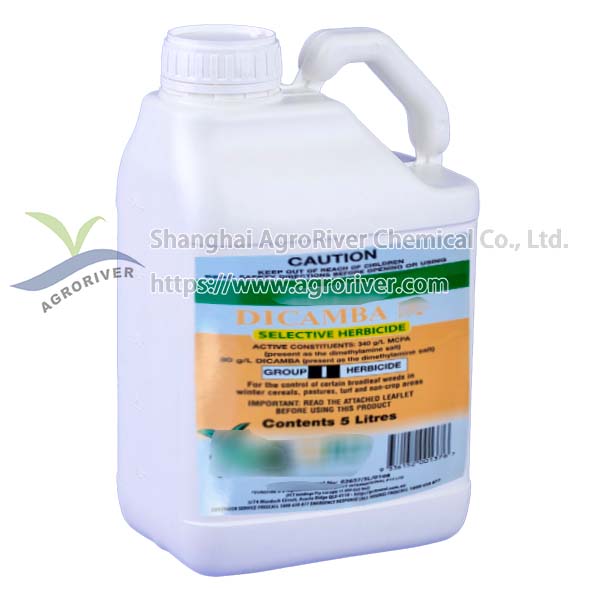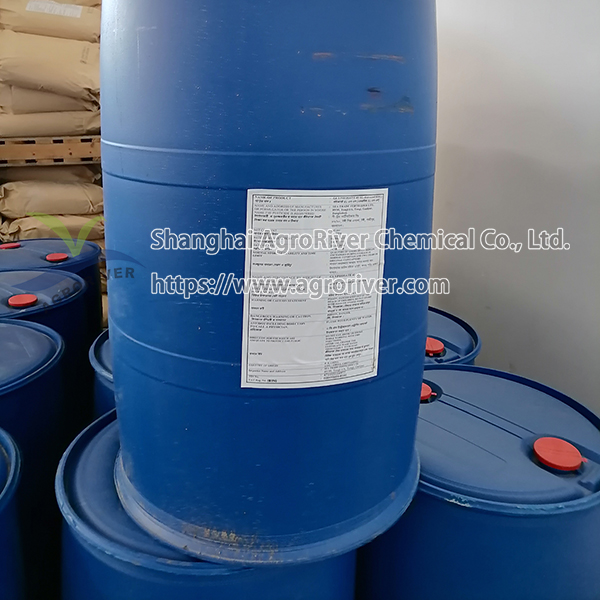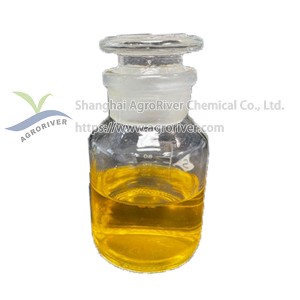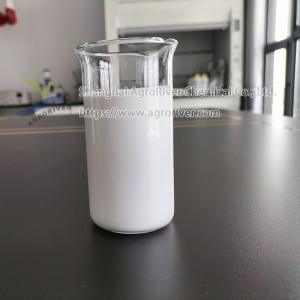Dicamba 480g/L 48% SL Selective Systemic Herbicide
Products Description
Basic Information
Common Name: Dicamba (E-ISO, (m) F-ISO), Dicamba (BSI, ANSI, WSSA), MDBA (JMAF)
CAS No.: 1918-00-9
Synonyms: Mdba;BANZEL;2-METHOXY-3,6-DICHLOROBENZOIC ACID;Benzoic acid, 3,6-dichloro-2-methoxy-;Banex;DICAMB;BANVEL;Banlen;Dianat;Banfel
Molecular Formula: C8H6Cl2O3
Agrochemical Type: Herbicide
Mode of Action: Selective systemic herbicide, absorbed by the leaves and roots, with ready translocation throughout the plant via both the symplastic and apoplastic systems. Acts as an auxin-like growth regulator.
Formulation: Dicamba 98%Tech, Dicamba 48% SL
Specification:
|
ITEMS |
STANDARDS |
|
Product name |
Dicamba 480 g/L SL |
|
Appearance |
Brown liquid |
|
Content |
≥480g/L |
|
pH |
5.0~10.0 |
|
Solution stability |
Qualified |
|
Stability at 0℃ |
Qualified |
Packing
200L drum, 20L drum, 10L drum, 5L drum, 1L bottle or according to client's requirement.


Application
Control of annual and perennial broad-leaved weeds and brush species in cereals, maize, sorghum, sugar cane, asparagus, perennial seed grasses, turf, pastures, rangeland, and non-crop land.
Used in combinations with many other herbicides. Dosage varies with specific use and ranges from 0.1 to 0.4 kg/ha for crop use, higher rates in pasture.
Phytotoxicity Most legumes are sensitive.
Formulation types GR; SL.
Compatibility Precipitation of the free acid from water may occur if the dimethylammonium salt is combined with lime sulfur, heavy-metal salts, or strongly acidic materials.







